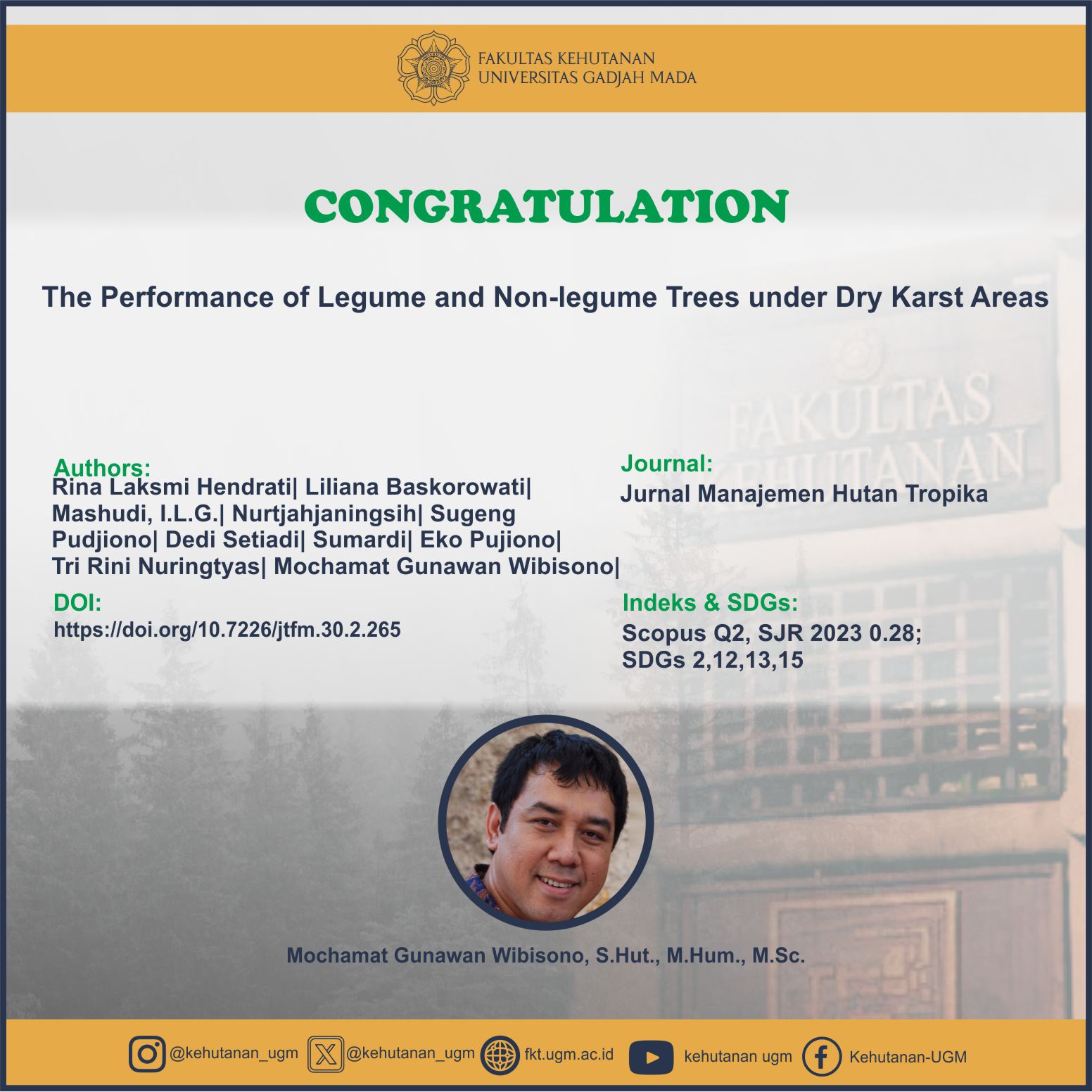
Abstract
Karst areas in Indonesia are arid landscapes with water-use limitations because of dissolved carbonates. Long-term water scarcity stunts plant growth and often kills them. For tropical karst forestry-greening, the three best legume and three best non-legume species from a previous trial comprising 20 species were compared. Since October 2011, seedlings of the top three non-legume, species Aleurites mollucana, Sterculia foetida, and Alstonia scholaris, and three legume species, Acacia auriculiformis, Cassea seamea, and Acacia mangium, have been grown for four months. In January 2012, field trials were established at two dry karst locations, i.e., Pracimantoro, Central Java, and Bunder, Gunung Kidul Yogyakarta. A randomized block design was used to raise 1.764 seedlings at the two sites with 7×7 plots, 3×3 spacing between trees, and three blocks. After 10 months, legumes and non-legumes differed greatly in all growth parameters. These disparities lasted up to 30 months, when trees should have adapted to their new surroundings. After seven years of planting, legume trees raised the soil’s organic matter concentration from low to medium, making it more fertile, similar to soil from intensive agricultural regions. Thus, early or mixed legume plantings on tropical karst sites may aid in better re-greening than the establishment of non-legumes.
SDGs:
SDG 2:Zero Hunger
SDG 12:Responsible Consumption and Production
SDG 13:Climate Action
SDG 15:Life on Land
Link Dokumen:
Download
